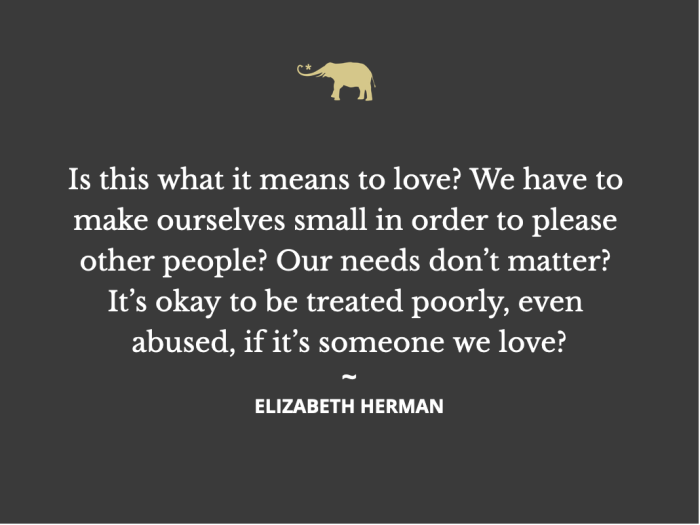Books have always been a big part of my life and there are many from childhood that stand out, mostly for good reasons, but a few because they stuck with me in a painful way. One such book is The Giving Tree by Shel Silverstein. To this day, if I see its bright green cover in a library, even at a distance, I will instantly get a pit in my stomach. If you aren’t familiar, it’s a story about a beautiful apple tree who loves a little boy. At the very start of the book their love appears reciprocal. As the boy grows into a man, however, he makes increasingly painful demands of the tree until it is rendered a sad stump with a scar-like carving at its base placed there by the child. The boy doesn’t appear to fare much better. We don’t see his life outside of his visits with the tree, but each time he returns there are few, if any, indications of happiness. There are certainly hints that things aren’t going as planned for him. At one point, he shows up asking for wood to make a boat to literally sail away from everyone. Maybe he too would have benefited from the word ‘no’?
The lesson for children here is a murky one. Is this what it means to love? We have to make ourselves small in order to please other people? Our needs don’t matter? It’s okay to be treated poorly, even abused, if it’s someone we love? Perhaps, if the tree had set limits with the boy he might’ve grown up to respect the needs of others, thus making him a happier individual, and the tree would be able to live on in her majestic state in the forest. There is one such re-imagining of the story which you can find here. If this story haunts you, as it does me, you might find this “new” version satisfying.
Children’s books aside, many people find it challenging to set healthy boundaries in their life. Much like the giving tree, they feel they are “doing right” by others if their sacrifices mean someone else seems happy. If you are a self-identified “people pleaser” learning to set boundaries with others is a skill that is worth learning.
Where to start?
A helpful starting point can be to visualize your personal energy. Picture your physical, mental and emotional energy as a very precious, yet replenishable resource. If you were to use imagery, what would this resource look like when it’s at capacity? Some examples might be, a cup that is full, a battery pack charged to full power, or a light, shining bright. Now, carefully consider what/who drains that energy source and what/who helps to charge it back up. None of us can be our best selves when we are operating on low power. If we aren’t careful with this precious resource it can impact our mental and physical health. Keeping an eye on our energy resources can help guide us on when we need to set limits with others.
What does it look like to set boundaries?
Sometimes it’s as simple as saying no, other times it can be more nuanced. Boundaries are the limits we set with others in all aspects of our lives from friendships, to work, to intimate relationships. One guide to setting limits with our words is to use the framework of clear, but kind.
Examples for physical boundaries: “I’m too tired right now, can we discuss this more after I have gotten some rest?” Or “I’m not ready for this kind of intimacy yet. I need to take things slowly.”
Examples for boundaries with time: “I can see this task is important, but I am not available today. I am free tomorrow after 1pm.” Or “Unfortunately, I am not in a place to take on an additional obligation at this time. I will let you know if my schedule frees up.”
Examples for emotional boundaries: “We can’t continue to discuss this if you’re going to yell. Let’s regroup when we are both calmer.” Or “I’m not comfortable talking about this topic with you. If you continue, I’ll need to leave.”
What if someone gets angry when I set a boundary?
Fear of negative feedback often prevents people from taking care of themselves and setting a limit. It might take some people in your life time to adjust to you responding differently, but most people will accept and respect clear responses. In other cases, people may respond with anger or guilt. These reactions can be red flags for toxic individuals or relationships. Adam Grant, author and psychologist, has a great quote about this. “When you let someone take you on a guilt trip, you’re allowing their expectations to drive your emotions. Their disappointment is not proof of your failure. No one has the right to dictate your responsibilities. Sometimes you have to let others down to uphold your boundaries.”
Be patient with yourself and ask for help.
Setting boundaries is a skill. As with any new thing we learn in life it takes time to practice it. It can be helpful to start small and rehearse limit setting with things in our lives that are lower stakes and work up from there. Remember that no one needs to do this alone, particularly if you find that you are struggling in other aspects of your life. Reach out and ask for help. Get support from a mental health professional who can assist you with learning how and when to establish new boundaries in your life. After all, don’t all of us deserve to be a majestic tree spreading their branches in the forest?












Read 0 comments and reply